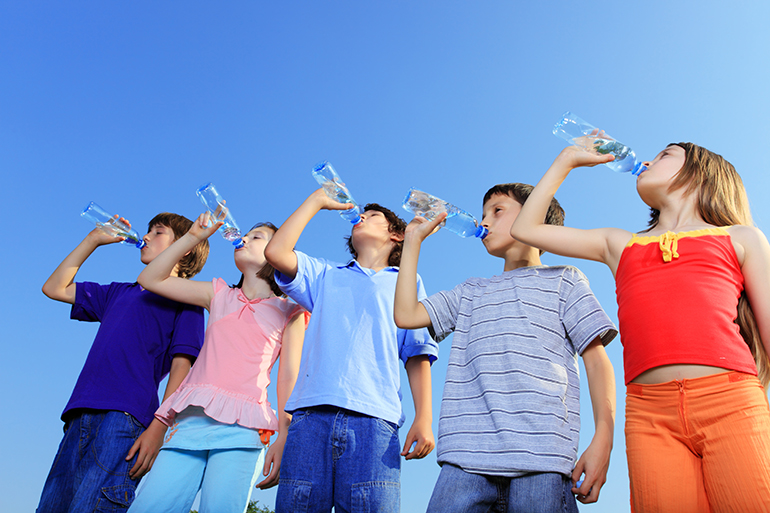Summer Camp Health Tips for East End Parents and Kids

As school winds down, East End families are getting ready for a summer of fun. Whether your child is spending her days at one of the area’s outstanding day camps or venturing out for sleepaway camp, here are some important health tips to have a happy and healthy summer.
Allergies
According to the Centers for Disease Control (CDC), food allergies are on the rise. About 6-8% of children have at least one food allergy and these can be serious. Symptoms of food allergies can include hives, itching, rashes, coughing, vomiting, lip swelling, and difficulty breathing. In short, food allergies can be life threatening for some children. If your child has a food allergy, make sure the camp staff understands exactly what triggers their symptoms, what their symptoms are, and how to manage an emergency. Equip your camper with the medications recommended by your doctor, including an epi-pen (an injectable rescue medication for anaphylactic shock) if necessary. Remind your child to ask questions when offered new foods or treats, and be prepared to send special snacks for your day camper if the camp can’t accommodate special requests. If one of your child’s co-campers has an allergy, do your best to respect the rules and don’t send food that could be dangerous.
Lyme Disease
Long Island is notorious for deer ticks that carry Borrelia burgdorferi, the most common bacteria that cause Lyme disease, a tick-borne illness that can cause rash, joint pain, headaches, fever and swollen lymph nodes, among other symptoms. If untreated, Lyme disease can also cause neurologic symptoms and cardiac damage. It’s important to minimize your child’s risk for tick bites and to identify early signs of possible Lyme disease, which can be successfully treated with antibiotics.
Whenever possible make sure your child wears a hat, long sleeves and long pants in heavily wooded areas. Encourage them to tuck their pants into their socks to further minimize exposed skin. Make sure your child is using insect repellent, with 20% DEET concentration, but avoid their hands, mouth and eyes. When hiking through brush and woods, encourage your children to stay on well-marked trails, which tend to have fewer heavily wooded areas.
Once your child comes home after a long day, teach him or her to check themselves for ticks (or make sure their counselor at sleepaway camp encourages this). In general, the shorter the time a tick is on your body, the less likely it is to cause disease. A deer tick is as small as the period on the end of a sentence and may be hard to see, but make sure everyone is looking.
Finding a deer tick is not an automatic reason to visit the infirmary or your pediatrician, but it is important to stay vigilant. Symptoms of Lyme disease can appear up to a month after a tick bite. Remind your children to alert camp staff or you if they have fevers, feel achy or sick, have “swollen glands,” or a new rash. The classic rash associated with Lyme disease is a bullseye, also known as erythema migrans. Any of these findings should send your child to the camp infirmary or their home pediatrician.

Sunblock
Camp is at its best and most fun when the sun is shining, but it’s crucial to protect your children from the risks it can pose. Remember, having five prior sunburns significantly increases your risk for melanoma (the deadliest form of skin cancer) later in life.
The sun is at its peak intensity from 10 a.m.–4 p.m., which is usually prime time at camp. Encourage your children to wear wide-brimmed hats in the sun, as well as sunglasses with ultraviolet (UV) protection. It’s a chance for them to make a fashion statement, as well as a positive health choice!
Sunscreen only works when it’s being used in the right amounts and at the right times—start with an SPF of at least 15 and cover all areas of the body that aren’t covered by clothing. It’s important to reapply sunscreen frequently – every two hours, especially if your child is swimming or sweating a lot in the heat. Even waterproof sunscreen must be reapplied. According to the American Academy of Pediatrics (AAP), a young adult needs about one ounce of sunscreen per application.
Hydration
Campers should have liberal access to fluids during camp season. High temperatures, high humidity and lots of activity are a perfect recipe for dehydration—typically, by the time your child is thirsty, they are already somewhat dehydrated. In general, young children need between one and two liters of fluid per day; the amount goes up to 2.5 liters as children get larger. Although water is the healthiest choice, sports drinks, low-sugar drinks, ice pops and, yes, even bug juice are acceptable options for children to get enough liquid during the day. Remember, caffeinated products can act as diuretics and make dehydration worse.
Vaccines
Unfortunately, this is still a topic of conversation in 2019. Diseases, such as measles, which were previously eradicated in the United States, are back. These vaccines are unequivocally recommended and found to be safe and beneficial by the AAP, CDC and the World Health Organization. Check your camp’s vaccine policy—do they require campers required to be vaccinated?
Also ask about the staff vaccine policy—many adults born between the late 1970s and mid-1980s only received one measles vaccine and may not be immune.
Communication
As your children venture out for their summer adventures, make sure to keep the lines of communication open. Encourage your children to share their stories, adventures and triumphs with you. Showing interest in their growing independent lives will make them feel safer, more secure and more willing to share, even when things are not going well.
Dr. Rina Meyer is a board-certified pediatric hematologist-oncologist in practice at Stony Brook Children’s. She is an assistant professor of clinical pediatrics at Renaissance School of Medicine at Stony Brook University. Her views are her own and do not necessarily represent the views of Stony Brook University or Stony Brook Children’s Hospital.
Visit our Summer Camp Guide for a list of local camps, as well as more helpful articles about choosing the right camp and more.



